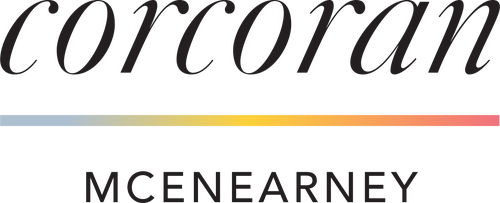It’s not uncommon for a homeowner to ask if solar panels will affect the value of their home. According to a report by Zillow in 2019, solar panels can potentially increase a home’s value by up to 4.1% when compared to similar homes without panels. The report further states this could increase the value of a median-priced home in the U.S. by $9,274.
However, two years later in today’s seller-dominated market where homes can easily get 10% above list price for just having a roof and four walls, this question almost becomes a moot point. But, there are other ways owners with residential solar can see a cost-benefit that can be well-documented.
The direct benefit of solar panels is they reduce a homeowner’s electric bill. Net metering is allowed in Virginia, DC, and Maryland, and it works a bit like a bank account. For example, consider that on sunny days the solar panels will create an excess of electricity which goes back to the grid. This is like putting money in the bank.
However, on overcast days when energy consumption is greater than what the panels provide, the homeowner can tap into the “bank” and “withdraw” energy without having to pay for it. Over the course of 12 months, the electricity production and electricity use essentially equal out. In all three jurisdictions, homeowners still have to pay to connect their solar systems to the grid, so they will still get a bill from their utility. In Virginia, it ranges from $6-$12 a month, and in DC and Maryland, it costs approximately $8 per month, according to Alex Ticu, a solar consultant with Lumina Solar based outside Baltimore.
Through 2022, homeowners who install solar panels will get a 26% tax credit, and panels installed in 2023 will get a 22% tax credit. However, this extension of the solar Investment Tax Credit (ITC) will end in 2023, so homeowners need to plan ahead. “This means you need to have your order in by August,” said Phil Covell with Vellco Solar, a specialist in solar energy, efficiency, and energy procurement based in Virginia. If the panels aren’t installed in 2022 then the tax credit will drop to 22% beginning in January 2023.
Homeowners can get paid for having solar by selling their SRECs (solar renewable energy certificates). What are SRECs? Solar United Neighbors (SUN), a national non-profit that represents solar owners and supporters, states that an SREC “represents the ‘green’ value of your electricity. SRECs are sold separately from the physical electricity that your solar panels produce. . . You earn one SREC for every 1,000 kWh (or 1 MWh) of electricity produced by a solar system.” How does this translate for the average homeowner with solar?
In Virginia, for example, thanks to the Virginia Clean Economy Act of 2019, utilities are now required to provide a certain amount of solar energy a year or else they’ll get fined. One way they can meet these requirements is by purchasing SRECs from Virginia homeowners. Currently, an SREC in Virginia is around $45. So, a modest-sized solar array generating 5.25 MWh per year would earn approximately $236.25 for the homeowner. Over the life of the solar panels (25 years), this could be a savings of $5,906.25.
However, the cost of SRECs varies considerably depending on the jurisdiction. In 2021, SRECs were $77.50 on average in Maryland and in DC they were between a whopping $380 and $435. As you can see, DC has the most robust program and the highest price for SRECs. This is because DC’s Renewable Portfolio Standard (RPS) requires that 100% of the District’s electricity comes from renewable energy by 2032. The goal for Virginia, by contrast, is that only 30 percent of its electric system will be powered by renewable energy resources by 2030. So, the price paid for SRECs is based on supply and demand.
Residents in Fairfax County will get a tax exemption for 5 years using their property tax rate. For example, if the cost of the solar installation was $18,000 and the tax rate is $1.14, then the tax credit per year would be $205.20. ($18,000/100 = $180 x $1.14 = $205.20). Over five years this would be a cost-saving of $1,026.
Residents of Prince George’s and Baltimore counties can receive a $5,000 tax credit while those in Ann Arundel and Hartford counties can receive a $2,500 tax credit according to Ticu with Lumina Solar.
In Maryland, eligible residents can apply for a grant for $1,000 for installed solar systems. Applications will be accepted through June 30, 2022, or until funds have been exhausted. The program is through the Maryland Energy Administration. (https://egov.maryland.gov/mea/CleanEnergy/)
There are indirect cost benefits, as well. Dominion Energy, for example, states it will be raising its rates each year in the near future. According to the State Corporation Commission’s (SCC) Status report (2020), Dominion Energy’s residential customers paid $116.18 in 2020 for 1,000 kWh per month and are projected to pay $171.20 in 2030. That’s an increase of 47% by 2030. Those customers with solar panels will be immune to those rate increases.
Another indirect benefit according to Covell with Vellco Solar is that many jurisdictions in Virginia exempt solar systems from property taxes. Therefore, your property taxes don’t increase just because you’ve added this improvement to your home.
"More and more people are realizing that solar just makes sense.” said Aaron Sutch, Atlantic Southeast Region Director with SUN. “It's a generator with no moving parts, a free source of fuel over 25 years with a virtually maintenance-free lifespan."
If you want to sell your house with solar panels, make sure you have a real estate agent who appreciates their benefits and is knowledgeable about the value the panels bring to your home. Your agent should also be able to translate that information and be able to effectively market the benefits to buyers and their agents. Otherwise, it’s like leaving money on the table.

JaneEllen McLaughlin Saums
janeelle.saums@corcoranmce.com
703.861.3523
janeellensells.com









